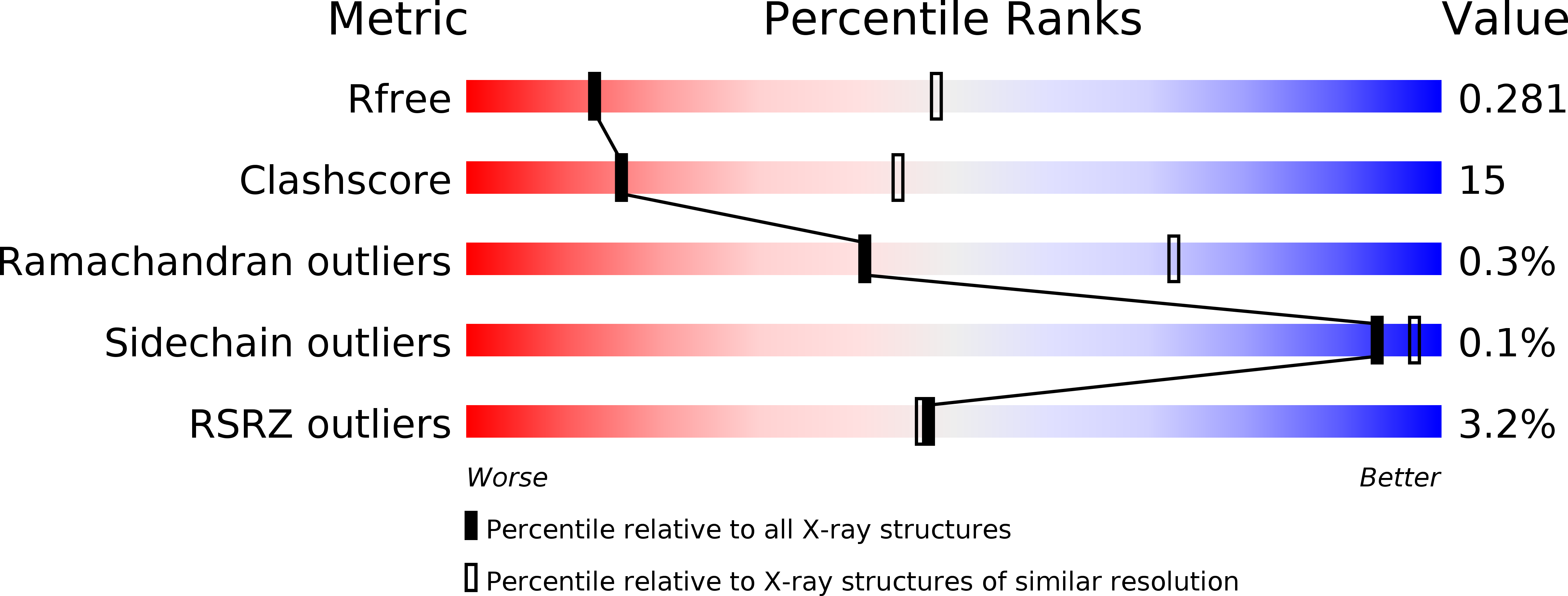
Deposition Date
2020-07-06
Release Date
2020-11-25
Last Version Date
2024-05-01
Entry Detail
PDB ID:
6ZNQ
Keywords:
Title:
Crystal Structure of DUF1998 helicase MrfA bound to DNA and AMPPNP
Biological Source:
Source Organism:
Bacillus subtilis (strain 168) (Taxon ID: 224308)
synthetic construct (Taxon ID: 32630)
synthetic construct (Taxon ID: 32630)
Host Organism:
Method Details:
Experimental Method:
Resolution:
3.34 Å
R-Value Free:
0.28
R-Value Work:
0.22
R-Value Observed:
0.22
Space Group:
P 41 21 2


